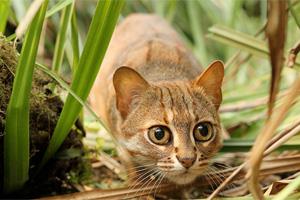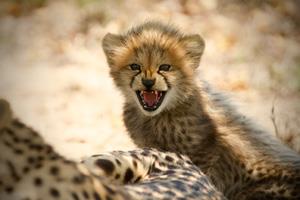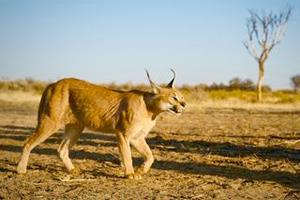One story about cats is that they cut a silent deal with humankind, back in the days of Ancient Egypt.
The story goes like this: ‘We’ll keep your granaries free of birds, rats, and mice,’ cats told the Ancient Egyptians, ‘and in return, you’ll provide us with the occasional treat, give us free access to your homes and suffer our eccentricities and moodiness in silence.

That story can never be proven, of course, as the Ancient Egyptians are no longer among us, and so can’t tell us themselves.
The naming of cats is a difficult matter, the poet T.S. Eliot reminded us, centuries later. (No, it was not Andrew Lloyd Webber, as some believe. Webber adapted the book for the musical from Eliot’s original.)
A cat must have three different names, Eliot-not-Webber continued. First of all, there’s the name that the family uses daily, such as Bella, Tigger, Milo, CoCo, Kiki, Oreo, Oliver and Kitty.
Then there’s the name that’s particular, that’s more dignified, that allows the cat to cherish his/her pride, names that often remind us of the classics: Plato, Pushkin, Agamemnon, Caesar, Cleopatra
And then there’s the name only the cat himself — or herself — knows, the “deep and inscrutable singular name.”
Inscrutable is the key word here. Inscrutable, as in “mysterious, unfathomable” (Dictionary.com), is why the world is divided into two kinds of people, cat people and not-so-cat people. And it’s at least in part why PBS’s venerable science program Nature has devoted a two-part program, The Story of Cats, to the science, natural history and mystery of cats, timed to coincide more-or-less with National Cat Day and Halloween.
(A little-known though obvious-when-you-think-about-it fact: Black cats are often the last to be adopted from animal shelters, because they’re still considered unlucky, even in these enlightened times. As the devoted companion of a black rescue, I can assure the reader that black cats are as loyal and loving — and intelligent — as any cat on the planet.)

Nature being about nature, The Story of Cats’s emphasis is on the natural history of an animal of which there are more than 35 known species, ranging from the familiar house moggy — believed to be genetically related to the African wild cat, an actual species — to critically endangered big cats like the lion, tiger, leopard, and cheetah (left). (Yes, lions are critically endangered: Fewer than 30,000 remain in the wild, according to recent scientific surveys; in contrast, wild elephants, which are illegally hunted for their ivory, number 450,000 across Africa.)
The Story of Cats examines the physiology of the earliest known cats and their origins in the tropical rainforests across equatorial Asia, some 11 million years ago. Part one, “Asia to Africa” (Wednesday, PBS at 8 ET, check local listings), shows how the earliest cats adapted to deserts, savannas, frozen forests and even mountaintops. The program shows how the rare clouded leopard, native to Southeast Asia and China, established the genetic blueprint shared by all cats. Some nine million years ago, climate change — receding waters in the face of a planet-wide drought — made Africa accessible from Asia in the form of land bridges across what we now know as the Red Sea and eastern Mediterranean.
Part two, “Into the Americas” (Nov. 9, PBS at 8 ET, check local listings) traces the migration at the other end of the planet, across the land bridge formed by the Bering Strait from Asia into North America, where the earliest cats competed for food and territory with the early ancestors of wolves and foxes.

The shared dislike of dogs and cats goes back some nine million years, in other words. It didn’t happen just yesterday.
The program also shows how — and why — even indoor cats have never lost the instinctive urge to hunt, and why, as a species, cats will need to go through a whole new stage of evolutionary development if they’re ever to lose that instinct.
As filmmaking, The Story of Cats suffers from many of the signatures of contemporary TV documentaries: too-earnest-by-half narration and constant music where often silence would suffice. (It’s a pet peeve of mine, forgive the pun: When will program-makers learn that no music is often better than unnecessary music?)
Thankfully, despite the smothering narration and non-stop music, none of this takes away from The Story of Cats’ considerable strengths, and the reasons to watch: Inspired, often breathtaking photography, including night-time infrared footage in Wednesday’s opener of a leopard chasing a civet through treetops in the dead-of-night, to the program’s epic scale, from the snow-covered peaks of the Himalayas to the lowland rainforests of Borneo. It’s a tall order to compress 11 million years of natural history into just two hours of TV, but The Story of Cats manages to do just that.